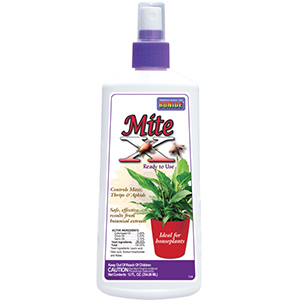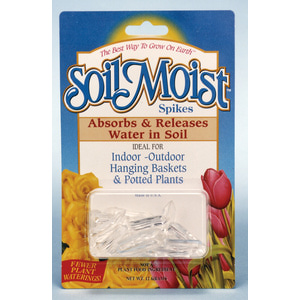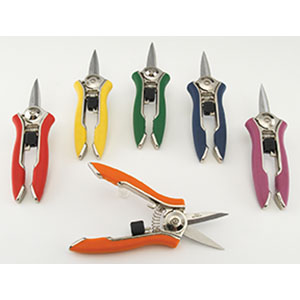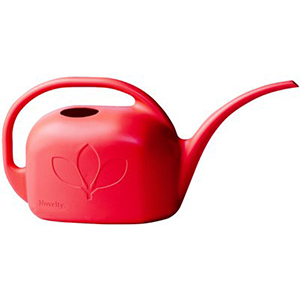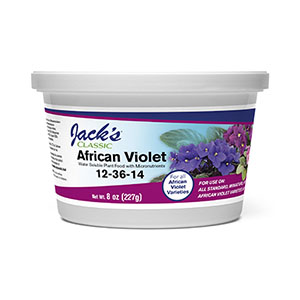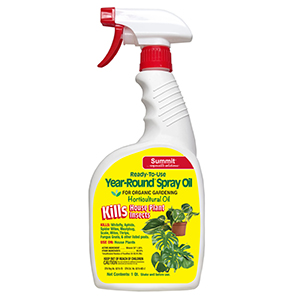As winter weather ramps up and outdoor flowers hit their natural decline in many regions, many consumers will look to bring plants or foliage indoors and try to sustain their growth. Indoor color can be a challenge, though Christmas cacti, African violets, orchids and miniature roses are several common and reliable options.
Unfortunately, even indoor plants can face trouble from
pests and diseases. This month, we’ve got some tips for you to consider as you
plan your product mix for indoor-plant remedies, and as you guide your
customers in choosing the right solutions for their plants.
Solutions for The
Great Indoors
One of the most ignored declarations on chemical product
labels is whether or not the product is listed for indoor use. The majority of
chemicals found in stores are for outdoor use only. The outdoor-only
restriction may be rooted in one or more causes: The active ingredient(s) may
be especially toxic to pets or children, may be a severe eye or skin irritant,
or may give off pungent fumes that will linger long after the application is
made.
Thankfully, multiple manufacturers and brands offer excellent
products and solutions for indoor plants. The Safer brand from Woodstream includes
several products with active ingredients that are well-known for being safe and
effective for indoor use when applied as directed. The most popular product in
the Safer line is their insecticidal soap for indoor insect control.
Be sure to clearly differentiate between indoor and outdoor
products in your chemistry aisle. Remind customers to read product labels
carefully, making sure the product is also applicable for the plant that they’re
treating. Some plants are sensitive to certain chemistry as well: You may not
only kill the pest, but the entire plant! These declarations are always listed
on the label.
Remember: Chemical products are formulated to get the job
done while using the least amount of active ingredient necessary. As a rule,
encourage your customers to always follow label directions. It can’t be
overstated. If their desired use is listed on the label, a consumer is able to
use or treat as directed. Never make a recommendation for an application or use
that’s not listed on the label. If you or your customer have further questions,
many manufacturers offer product support via phone or website, both of which
are usually listed on the label.
Fast and Furious Win
the Race
When faced with pest or disease issue, many homeowners
hesitate. They may be unsure of what the problem is and/or unsure of how to
treat it. However, as you know, time is of the essence in these situations.
Some plant problems, if left unchecked for too long, can quickly lead a plant down
the path of no return! This is especially true when red spider mite, scale or
even powdery mildew is first observed.
Some pest and disease issues can be enabled by where the
plant is located within the home. Spider mites are a perfect example: These
insects thrive in the dry, warm climates that are common in winter. Engage your
customers in conversation to learn more about their plant symptoms, and listen
carefully for contextual clues. In the case of spider mites, increasing
humidity levels and positioning plants away from heater vents may provide quick
and easy relief.
Over the course of your discussion, determine if the issue
may be a conditional threat to other plants nearby. If so, you may need to advise
your customer to examine all surrounding plants for similar symptoms. They’ll want
to quarantine infected or infested plants to a remote area temporarily until
the issue(s) are under control.
Spider mites are among the toughest insects to treat
indoors. Old-time remedies like Kelthane or Vendex (which were true miticides)
have been replaced by various compounds of lightweight spray oils in
ready-to-use bottles, which coat and suffocate the spider mites along with
their eggs. Being contact sprays, they need to “hit” the target to be
effective. Many times, plants will need a follow-up application to contain and
control mite populations.
For customers who seek an all-natural solution for spider
mites, another technique is to cover soil and pot with plastic and remove to a
sink or tub. Spray the undersides of leaves with a direct stream of water from
a spray nozzle and then spray over the top. Once the plant is reasonably dry,
return it to its original location after it’s been wiped down and vacuumed to
remove debris, insects and dead leaves.
An Ounce of
Prevention
Healthy plants are low-maintenance plants. Even with a
natural slowing of plant growth during the winter months, plants continue to need
water and nutrition, albeit in smaller amounts. Remind your customers to
maintain a watering and feeding schedule throughout the winter, as it’s a first
line of defense against many of the most common plant ailments.
Speaking of nutrition, more is not better when it comes to
fertilizing plants indoors. Many gardening experts recommend low-dose volumes
of nutrients, spaced a month or two apart in feedings. Suitable plant foods can
come in several different forms including plant spikes, time-release
fertilizers and water soluble-fertilizers that are mixed and applied using a
watering can or spray-mister bottle. Depending on your store’s capacity, you
may choose to stock a broad range of products or just a few.
December is the month when poinsettias find their way into
people’s homes. They may also contain insect issues that aren’t noticeable
right away. Encourage your customers to carefully inspect leaf surfaces, both
tops and undersides, for insects including webbing near leaf stems. After the
holidays, if in doubt, throw it out.
Teach your customers to get into the habit of watering with clean
tap water that’s been allowed to stand in an open container overnight. This
practice brings the water up to room temperature and allows any inherent
chemical gases like chlorine to evaporate. Distilled water is another option consumers
may consider.
The holidays are always a busy time in caring for family and
friends. Consumers would be wise to make time for weekly rounds to tend to their
indoor plants, too. The reward is some green or color inside while it’s dull
and gray outside.


